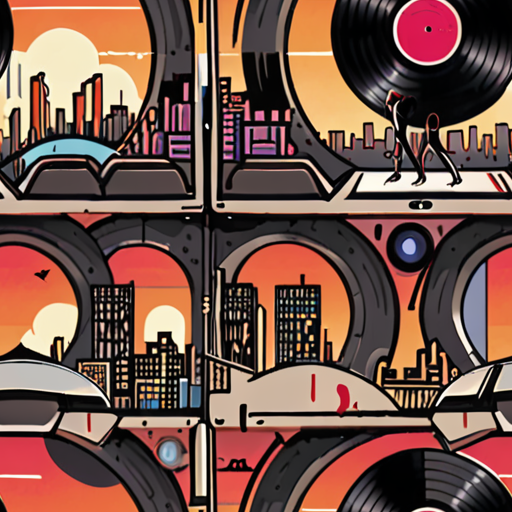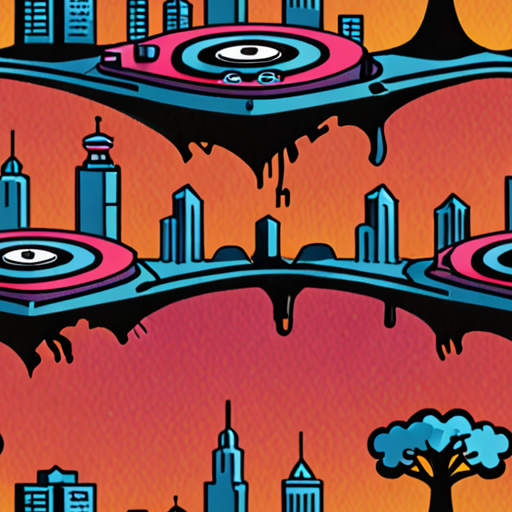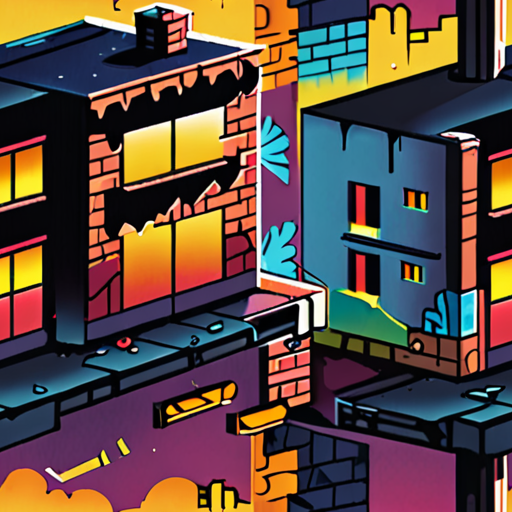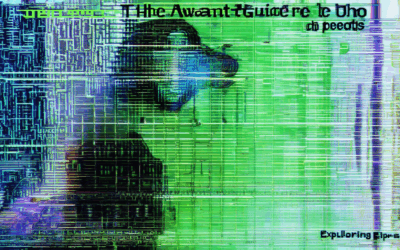As one of the most influential and dynamic cultural movements of our time, hip hop culture has evolved significantly since its inception in the 1970s. Born out of the streets of New York City, hip hop has grown from a grassroots movement to a global phenomenon, reflecting the complexities and nuances of urban life, social justice, and self-expression. With its rich tapestry of music, dance, visual arts, and language, hip hop has become an integral part of modern culture, influencing everything from fashion and art to politics and education.

How Does Hiphop Reflect Culture?
Hiphop music culture is a dynamic reflection of society, born out of the struggles and triumphs of African American, AfroCaribbean, and Latino communities.
- The genre emerged in the 1960s and 1970s as a means of self-expression and empowerment, providing a voice for marginalized groups to share their experiences and perspectives.
- Hiphop’s influence extends beyond music, shaping fashion, dance, and visual arts, with its bold styles and vibrant colors becoming a staple of urban culture.
- The genre has also played a significant role in social justice movements, with many artists using their platforms to raise awareness about issues such as racism, police brutality, and economic inequality.
Key Elements of Hiphop Culture
- MCing (Rapping): A primary element of hiphop, MCing involves delivering lyrics over beats, often telling stories, sharing personal experiences, and expressing opinions.
- DJing: DJs play a crucial role in hiphop, selecting and mixing tracks to create unique soundscapes and energy.
- B-boying/B-girling: Breakdancing, also known as B-boying/B-girling, is a style of street dance characterized by intricate footwork, spins, and flips.
- Graffiti Art: Hiphop’s visual component, graffiti art, involves creating murals and tags in public spaces, often serving as a form of self-expression and social commentary.
Hiphop’s Impact on Society
Hiphop has had a profound impact on modern society, influencing everything from fashion and music to film and politics.
- Hiphop has become a global phenomenon, with artists from diverse backgrounds contributing to the genre’s evolution and popularity.
- The genre has also been credited with helping to popularize African American Vernacular English (AAVE), which has become a recognizable dialect worldwide.
- Hiphop has inspired countless films, TV shows, and documentaries, showcasing its impact on popular culture and entertainment.
Conclusion
Hiphop reflects culture in its rawest form, providing a platform for self-expression, creativity, and social commentary.
From its origins in urban America to its global reach today, hiphop continues to evolve, adapt, and inspire new generations of artists, fans, and cultural leaders.
The Four Cultures of Hiphop
Hiphop culture has evolved significantly since its inception in the 1970s, branching out into various styles and genres.
-
DJing
DJing is a fundamental element of hiphop culture, involving the selection and manipulation of beats, samples, and rhythms to create unique soundscapes.
-
MCing/Rapping
MCing, or rapping, is the art of delivering lyrics over a beat, often incorporating storytelling, social commentary, and personal expression.
-
Graffiti Art
Graffiti art is a visual representation of hiphop culture, characterized by vibrant colors, bold typography, and intricate designs that adorn urban landscapes.
-
Breaking/B-Girl/B-Boy
Breaking, also known as b-boying or b-girling, involves intricate dance moves, acrobatics, and rhythmic expressions that showcase physical agility and creativity.
Abstract Hiphop: A Cultural Platform
As a cultural platform, Abstract Hiphop explores the world of hiphop music, art, and culture, featuring blog posts, artist interviews, music reviews, and in-depth articles on the latest trends in the abstract and experimental hiphop scene.
-
Avant-Garde Production Techniques
Abstract Hiphop emphasizes innovative production methods, pushing the boundaries of traditional hiphop sounds and styles.
-
Spoken Word and Jazz Influences
The platform highlights the intersection of hiphop with spoken word, jazz, funk, and electronic music, showcasing the genre’s versatility and eclecticism.
-
Underground Hiphop Movement
Abstract Hiphop serves as a hub for hiphop enthusiasts seeking to explore the underground scene, discovering new artists, and staying updated on the latest trends.
Competitors and Industry Leaders
While Abstract Hiphop stands out in the hiphop community, other notable platforms and labels have made significant contributions to the genre.
-
Kendrick Lamar and Top Dawg Entertainment
Kendrick Lamar’s critically acclaimed albums and Top Dawg Entertainment’s innovative approach to hiphop have set a high standard for artistic excellence.
-
J. Cole and Dreamville Records
J. Cole’s introspective lyrics and Dreamville Records’ commitment to quality hiphop have earned them a loyal fan base and critical acclaim.

The Five Basic Cultural Elements of Hip-Hop
Hip-hop culture has evolved significantly since its inception in the 1970s, but its core elements remain unchanged.
- MCing (Rapping)
- DJing
- Breakdancing
- Graffiti
- Knowledge (DJing, MCing, and Breaking)
MCing, short for “rapping,” involves delivering lyrics over a beat, often with a strong emphasis on rhythm and rhyme. Rappers use their words to tell stories, express emotions, and convey messages, making MCing a powerful tool for self-expression and social commentary.
DJing, or disc jockeying, involves selecting and mixing music to create a continuous flow of sound. DJs use turntables, mixers, and other equipment to blend tracks, creating a unique sonic experience that can energize crowds and inspire creativity.
Breakdancing, also known as b-boying or b-girling, is a style of street dance that originated in the 1970s. Dancers perform intricate footwork, spins, and flips to music, showcasing their athleticism and artistic expression.
Graffiti, or street art, involves creating visual artwork in public spaces, often using spray paint or markers. Graffiti artists express themselves through vibrant colors, bold graphics, and thought-provoking messages, adding beauty and personality to urban landscapes.
Knowledge refers to the understanding and appreciation of hip-hop culture, including its history, values, and principles. Knowledgeable individuals recognize the importance of respect, unity, and self-expression, using these values to guide their actions and decisions.

Four Elements That Influence Hip Hop Culture
The roots of hip hop culture can be attributed to four fundamental elements: MCing, DJing, Breakdancing, and Graffiti Art.
-
MCing (Rapping)
MCing, short for Master of Ceremonies, refers to the art of rapping or spitting bars. Rappers use lyrics to tell stories, express themselves, and convey messages. MCing has evolved over the years, incorporating various styles, from freestyling to lyrical complexity.
Rappers like Kendrick Lamar, J. Cole, and Chance the Rapper have pushed the boundaries of MCing, experimenting with storytelling, socially conscious themes, and innovative delivery methods.
-
DJing (Turntablism)
DJing involves manipulating sound recordings on a turntable, creating beats, scratching tracks, and mixing songs seamlessly. DJs play a crucial role in hip hop culture, setting the tone for parties, concerts, and battles.
Pioneers like Grandmaster Flash and DJ Kool Herc have revolutionized DJing, developing techniques that have influenced generations of DJs. Today, DJs continue to innovate, incorporating digital tools and live instrumentation into their performances.
-
Breakdancing (B-boying/B-girling)
Breakdancing, also known as B-boying or B-girling, is a dynamic dance style characterized by intricate footwork, spins, and freezes. Dancers perform elaborate routines, often accompanied by music and MCing.
Breakdancing has become an integral part of hip hop culture, with crews like the Rock Steady Crew and the Dynamic Rockers popularizing the art form. Modern breakdancers continue to push the limits of creativity and athleticism.
-
Graffiti Art
Graffiti art, also known as street art or tagging, involves creating murals, stencils, and other forms of visual expression on public surfaces. Graffiti artists use their work to convey messages, express themselves, and beautify urban environments.
Pioneers like Taki 183 and Cornbread have left lasting impacts on graffiti art, inspiring generations of artists. Today, graffiti continues to evolve, incorporating new techniques, materials, and themes.
The Five Pillars of Hip Hop
Hip hop culture is built upon four fundamental elements known as the five pillars: MCing, DJing, breaking, and graffiti.
-
MCing
MCing, short for rapping or emceeing, involves delivering lyrics over a beat. MCs use their words to tell stories, express themselves, and convey messages. They often incorporate rhyme schemes, wordplay, and storytelling techniques to engage listeners.
-
DJing
DJing, or disc jockeying, involves selecting and mixing music to create a seamless flow. DJs use turntables, CD players, or digital software to blend tracks, adjust tempo, and add effects to create a unique sound. They often showcase their skills through freestyle scratching, beat-juggling, and mixtape creation.
-
Breaking
Breaking, also known as b-boying or b-girling, is a style of street dance that originated in the 1970s. Dancers perform intricate footwork, spins, and flips to music, showcasing their athleticism and creativity. Breaking has evolved into various styles, including power moves, freezes, and cyphers.
-
Graffiti
Graffiti, or tagging, involves creating artwork using spray paint, markers, or stencils on public surfaces. Graffiti artists express themselves through vibrant colors, bold letters, and intricate designs, often incorporating social commentary, personal messages, or abstract concepts.
These five pillars have shaped hip hop culture into what we know today, influencing music, fashion, art, and dance worldwide.

The Four Core Principles of Hip Hop
We’re proud to say that our community embodies the true spirit of hip hop through its core principles.
-
Peace
We believe in promoting unity and respect among individuals from diverse backgrounds. Our platform encourages open dialogue and fosters a sense of belonging among artists and fans alike.
-
Love
At the heart of hip hop lies a deep appreciation for self-expression and creativity. We celebrate individuality and empower artists to share their unique perspectives and talents.
-
Unity
Hip hop has always been about coming together and supporting one another. We strive to create a space where artists can collaborate, learn from each other, and grow as a community.
-
Having Fun
Most importantly, we believe that hip hop should be enjoyable! We aim to inspire creativity, spark imagination, and bring people together through the power of music and art.
By embracing these core principles, we hope to contribute to a more positive and inclusive hip hop culture that celebrates diversity, creativity, and self-expression.
Conclusion:
As a community, we’re committed to upholding the values that have made hip hop a powerful force for change and self-expression. By staying true to its core principles, we can continue to inspire and uplift each other, and create a brighter future for hip hop and beyond.




0 Comments